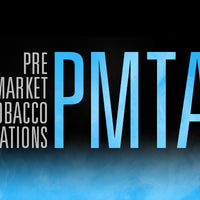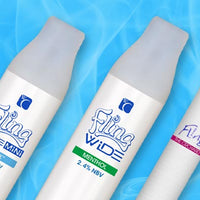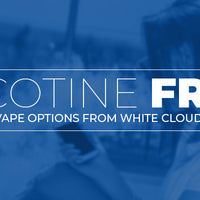In August of 2016, the vaping industry took a hard hit with the implementation of FDA vaping regulations. The onerous regulations stretched across 499 pages and included impossible requirements for the small businesses that make up the majority of the industry. With extensive and costly Premarket Tobacco Applications (PMTAs) at the forefront of FDA vaping regulations, vape companies across the U.S. were preparing for the decimation of nearly an entire industry by November of 2018. But, recent statements made by Scott Gottlieb, the new commissioner of the FDA as of May 11, 2017, have brought new hope to the industry.
New FDA Director Provides Relief for Vaping Industry

On Friday, July 28, 2017, Scott Gottlieb took the first steps to more sensible vaping regulations as he unveiled a new comprehensive plan for tobacco and nicotine regulation. Within his statements, Gottlieb expressed that “we must recognize the potential for innovation to lead to less harmful products, which, under FDA’s oversight, could be part of a solution. While there’s still much research to be done on these products and the risks that they may pose, they may also present benefits that we must consider.”
Gottlieb also went on to say; “We need to make sure we strike the right balance between FDA fulfilling its vital consumer protection role while also fostering innovation when it comes to potentially less harmful forms of nicotine delivery.”
It’s a relief to see the FDA embracing harm reduction and making the move towards more sensible vaping regulations. So what exactly does this new comprehensive plan involve?
The FDA’s New Approach to Harm Reduction

With this new comprehensive plan for tobacco and nicotine regulation comes a new deadline for FDA vaping regulations through a four-year extension for premarket tobacco applications. Vape businesses now have until August 8, 2022, to submit their applications, which gives some breathing room and a little bit of relief as products that were on the market prior to August 8, 2016, can remain on the market for another 5 years. Gottlieb expressed that this four-year extension is intended to provide more time for public comment and industry guidance for the regulation of vapor products.
Along with the new deadline comes a plan to make the PMTA process “more efficient, predictable, and transparent for manufacturers.” The deeming rule implemented last year left quite a few unanswered questions and gray areas with regards to both the PMTA and Substantial Equivalence processes for electronic cigarettes, along with the fear that not a single small vape business could possibly comply and would be forced to shut down.
Hopefully this new plan will address the lengthy and extremely cost-prohibitive aspects of the original deeming rule and come up with a revised plan that will focus more on regulating e-liquid ingredients and eliminating the hazards of exploding e cigarettes with battery safety provisions.
So what brought on these changes to the FDA vaping regulations? At the forefront of it all is nicotine.
FDA Regulations and Nicotine

The FDA’s main focus for its new regulatory plan for tobacco products is nicotine, which appears to still be viewed as the main culprit for tobacco addiction. While the new plan does includes “fostering innovation when it comes to potentially less harmful forms of nicotine delivery”, it also includes the possibility of gradually reducing the nicotine levels of combustible cigarettes to make them less appealing to smokers, which has already raised concerns of whether or not this policy will actually negatively affect current smokers by forcing them to absorb more carcinogens and toxins.
On the flip side, it appears the nicotine in e-liquids is safe, as Gottlieb stated that the FDA is “looking at ways to reduce nicotine levels in cigarettes so that they are minimally or non-addictive, while not altering the nicotine content of noncombustible products such as e-cigarettes.”
Although the FDA director has acknowledged that “nicotine in cigarettes is not directly responsible for the cancer, lung disease, and heart disease that kill hundreds of thousands of Americans each year” and “it’s the other chemical compounds in tobacco, and in the smoke created by setting tobacco on fire, that directly and primarily cause the illness and death, not the nicotine”, he still went on to say that “nicotine is astonishingly addictive”. This statement could actually be contradicted by years of research suggesting nicotine is not addictive when administered in it’s purest form and may even offer therapeutic benefits. Hopefully more positive research on nicotine will come to light now that it has become the FDA’s main focus in the regulation of tobacco products.
FDA Regulations and Flavored E Liquids

One part of the comprehensive plan that remains unclear and could be worrisome for the vaping industry is the FDA’s stance on flavored tobacco products. Vaping opponents continue to claim that flavored e-liquids target children and have continued to push the FDA to look into a flavor ban, which may be one of the reasons Gottlieb stated that he is asking the Center for Tobacco Products “to develop an Advance Notice of Proposed Rulemaking to address the issue of flavored tobacco products and kids.”
However, Gottlieb also stated that the FDA does intend to “seek public comment on the role that flavors (including menthol) in tobacco products play in attracting youth and may play in helping some smokers switch to potentially less harmful forms of nicotine delivery“, so it is hopeful that the focus will be on regulating the naming and marketing of flavored e-liquids, rather than prohibiting non-tobacco flavors that former smokers attribute to their success in quitting smoking.
The New Future of the Vaping Industry
While the finalized processes for regulating electronic cigarettes will remain unclear as the FDA pursues it’s new comprehensive plan, we can rest assured that the agency is heading in a better direction as Gottlieb expresses the need to “strike the right balance between FDA fulfilling its vital consumer protection role while also fostering innovation when it comes to potentially less harmful forms of nicotine delivery.” The fact that the FDA finally recognizes electronic cigarettes as a potentially less harmful form of nicotine delivery is the biggest win the vaping industry could hope for.
Related: Will FDA Vaping Regulations Change?






